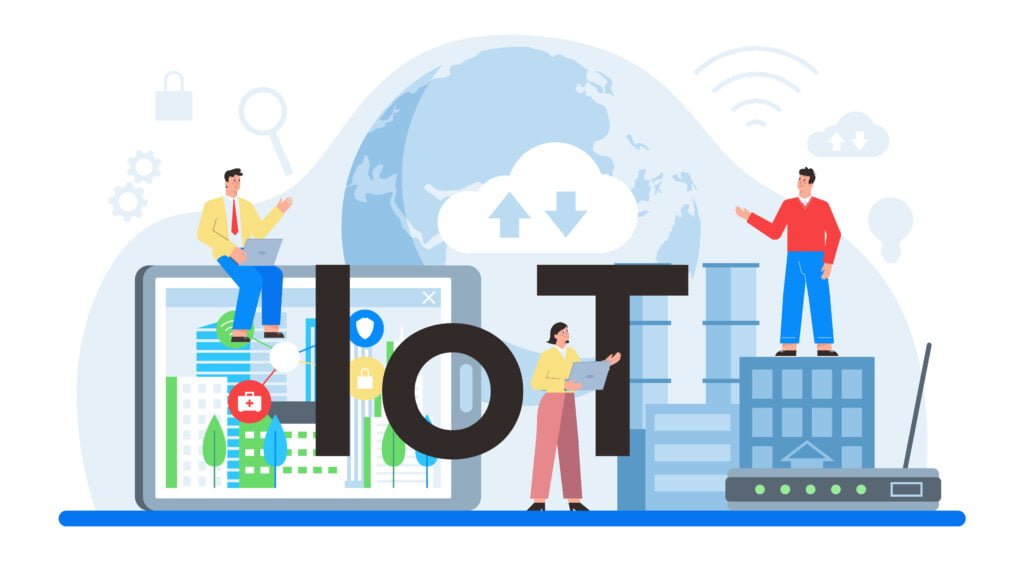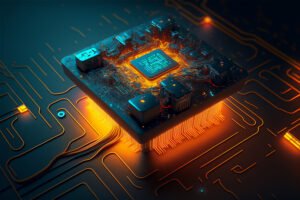The way we engage with technology and the outside world has been completely transformed by the Internet of Things (IoT). It has made gadgets seamlessly connected, enabling businesses and individuals to gather, share, and process data in real time.
IoT applications do, however, present a number of issues, particularly in terms of connectivity and efficiency, as they continue to expand. Here’s where Field-Programmable Gate Arrays (FPGAs) come in. This cutting-edge technology has the ability to solve these problems and advance IoT solutions.
A distinctive and flexible method of hardware design is provided by FPGAs. FPGAs are programmable semiconductors that, in contrast to conventional fixed-function integrated circuits, may be instantly altered to fit different tasks.
FPGAs are the perfect solution for the dynamic and varied requirements of IoT applications thanks to their inherent flexibility. IoT developers may improve connectivity, streamline data processing, and get around the constraints of traditional processing units by leveraging the capabilities of FPGAs.
We will delve into the interesting world of FPGA-based IoT solutions in this post and examine how they improve connectivity and effectiveness in the IoT space. We will demonstrate the substantial impact of FPGAs on the quickly changing landscape of IoT applications, from comprehending the difficulties of IoT connectivity to examining actual case studies and predicting future trends. To see how FPGA-based IoT solutions are transforming the future of connected devices and creating a more efficient, interconnected world, let’s set off on this adventure.
Role of FPGAs in Enhancing IoT Connectivity
The Internet of Things (IoT) has revolutionized the way we interact with devices and machines, creating a vast network of interconnected smart devices that communicate and exchange data. However, the efficient management and connectivity of these devices present significant challenges due to the diverse nature of IoT devices and the enormous amount of data generated. Field-Programmable Gate Arrays (FPGAs) have emerged as a powerful solution to enhance IoT connectivity by addressing these challenges and unlocking numerous advantages for IoT applications.
A. Hardware Acceleration for Data Processing:
- One of the key advantages of FPGAs is their ability to implement custom hardware accelerators tailored to specific IoT tasks.
- FPGA-based hardware accelerators can significantly improve data processing speed, enabling real-time analytics and decision-making at the edge of the IoT network.
- By offloading computationally intensive tasks from the main processor, FPGAs help reduce the workload on IoT devices, optimizing power consumption and extending battery life.
B. Parallel Processing Capabilities:
- FPGAs excel at parallel processing, which is crucial for handling the massive amounts of data generated by IoT devices.
- Traditional processors are often limited in their ability to process multiple data streams simultaneously, leading to bottlenecks in IoT systems.
- FPGAs can be programmed to perform parallel processing efficiently, enabling them to handle multiple data streams concurrently, thus enhancing overall system performance.
C. Customizable Communication Interfaces:
- IoT devices use various communication protocols, such as Wi-Fi, Bluetooth, Zigbee, LoRaWAN, and more, depending on the application and use case.
- FPGAs can integrate multiple communication interfaces on a single chip, making them highly versatile and adaptable to different IoT connectivity requirements.
- The flexibility to customize communication interfaces allows FPGAs to act as universal translators between diverse IoT devices, promoting seamless communication and interoperability.
D. Protocol Compatibility and Flexibility:
- As the IoT landscape evolves, new communication protocols and standards continue to emerge.
- Traditional fixed-function hardware may struggle to adapt to these evolving standards, requiring hardware upgrades or replacements.
- FPGAs can be reprogrammed and reconfigured to support new protocols, ensuring future-proof connectivity for IoT devices without the need for costly hardware changes.
Understanding IoT Connectivity Challenges
In the world of the Internet of Things (IoT), connectivity plays a vital role in enabling seamless communication between devices, gathering data, and facilitating real-time decision-making. However, IoT connectivity also comes with several unique challenges that need to be addressed for efficient and reliable IoT deployments. In this section, we will explore some of the key challenges associated with IoT connectivity.
A. Scalability and Heterogeneity of IoT Devices:
- The IoT ecosystem consists of a vast number of devices, ranging from small sensors to complex gateways and cloud servers. Managing and connecting such a diverse set of devices pose scalability challenges.
- Heterogeneity in communication protocols, data formats, and hardware interfaces further complicates the connectivity landscape, requiring seamless interoperability solutions.
B. Bandwidth and Latency Constraints:
- Many IoT devices, especially those deployed in remote areas or using wireless communication, have limited bandwidth. Transmitting large volumes of data in such constrained networks can lead to bottlenecks and delays.
- Applications that require real-time responses, such as industrial automation or autonomous vehicles, must overcome latency challenges to ensure timely and accurate data delivery.
C. Power and Resource Limitations in IoT Devices:
- IoT devices are often designed to operate on low power to maximize their battery life, making energy efficiency a critical concern.
- Limited processing capabilities and memory in IoT devices may hinder complex encryption, data compression, or data processing tasks, affecting communication efficiency.
D. Security and Privacy Concerns:
- IoT devices, especially those deployed in critical infrastructures or healthcare, collect sensitive data that must be protected from unauthorized access and cyber threats.
- Ensuring end-to-end encryption and secure communication channels becomes essential to maintain data privacy in the IoT ecosystem.
E. Network Reliability and Connectivity Management:
- IoT devices can be deployed in challenging environments with unreliable network connections, such as remote areas or industrial sites. Ensuring continuous data transmission in such conditions becomes a significant challenge.
- Efficient connectivity management, including seamless handoffs between different networks (e.g., Wi-Fi, cellular, LPWAN), is crucial for maintaining uninterrupted IoT services.
F. Cost and Deployment Considerations:
- IoT deployments often involve a massive number of devices spread across large areas. The cost of connectivity solutions, including hardware, communication modules, and network subscriptions, can be a significant factor in decision-making.
- Ease of deployment and maintenance becomes essential to manage large-scale IoT networks effectively.
Security and Reliability in FPGA-Based IoT Solutions
Ensuring the security and reliability of IoT solutions is paramount, as they often involve the exchange of sensitive data and control over critical systems. With FPGA-based IoT solutions, there are unique considerations to address, given the reprogrammable nature of FPGAs and the distributed nature of IoT networks. In this section, we will explore the various aspects of security and reliability in FPGA-based IoT solutions and discuss strategies to mitigate potential risks.
A. FPGA Security Features and Considerations
- FPGA security capabilities: Built-in security features provided by FPGA manufacturers, such as encryption, bitstream protection, and secure configuration interfaces.
- Securing the FPGA configuration: Techniques to protect the FPGA configuration bitstream from unauthorized access and tampering.
- Physical security measures: Protect physical access to FPGA-based devices and gateways to prevent potential attacks.
- Security against side-channel attacks: Addressing vulnerabilities related to power consumption, electromagnetic emissions, and timing analysis.
- Countermeasures against reverse engineering: Implementing techniques to thwart attempts to extract sensitive information from FPGA designs.
B. Encryption and Authentication in FPGA-Based IoT Systems
- Data encryption: Utilizing cryptographic algorithms to secure data both at rest and during transmission.
- Key management: Best practices for secure key generation, storage, and distribution.
- Authentication mechanisms: Implementing secure authentication methods to ensure that only authorized devices can access the network.
- Secure communication protocols: Choosing and implementing encryption protocols (e.g., TLS, SSL) for secure data exchange.
C. Ensuring Reliability and Fault Tolerance
- FPGA fault tolerance techniques: Designing FPGA-based systems with redundancy and error-correction mechanisms.
- Error detection and correction: Implementing techniques like parity checking and CRC to identify and rectify data errors.
- Redundancy in critical systems: Duplication of FPGA modules and components to enhance system reliability.
- Failover mechanisms: Designing failover strategies to maintain system functionality during device failures.
D. Over-the-Air Updates and Remote Management
- Secure firmware updates: Ensuring the authenticity and integrity of firmware updates sent over the air.
- Remote configuration and monitoring: Implementing secure remote management interfaces for FPGA-based devices.
- Secure boot process: Verifying the integrity of the FPGA configuration during device boot-up.
Conclusion:
FPGA-based IoT solutions offer a versatile and efficient approach to address the connectivity challenges of the Internet of Things. With their hardware acceleration and customizable nature, FPGAs can optimize data processing, reduce latency, and enable real-time analytics. These solutions enhance security, privacy, and reliability while supporting diverse communication protocols. Successful case studies across industries highlight their potential for revolutionizing IoT applications. As FPGA technology advances and integrates with emerging technologies, we can expect a smarter, more interconnected IoT landscape in the future.


![What is FPGA Introduction to FPGA Basics [2023] computer-chip-dark-background-with-word-intel-it](https://fpgainsights.com/wp-content/uploads/2023/06/computer-chip-dark-background-with-word-intel-it-300x171.jpg)









